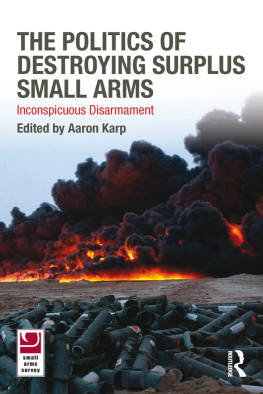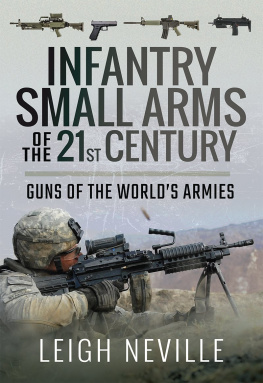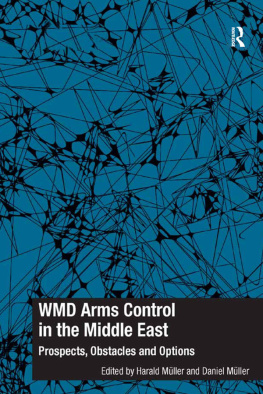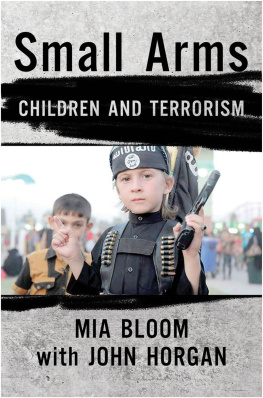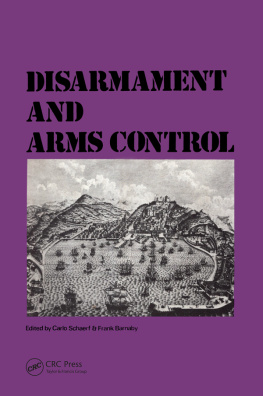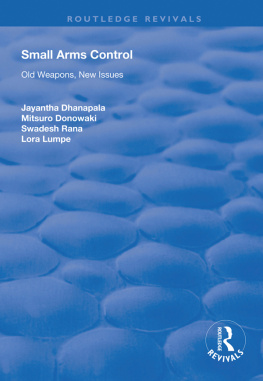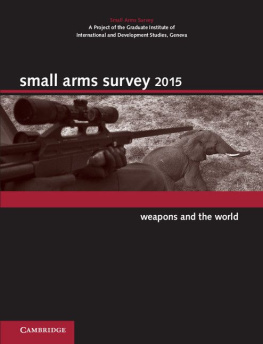The Politics of Destroying Surplus Small Arms
Although it receives much less attention than better known disarmament processes, the destruction of small arms is reshaping the military arsenals of the world. Out of roughly 200 modern military small arms world-wide, about 500,000 are destroyed every year. The commitment of major governments and international organizations makes small arms destruction a permanent addition to the global disarmament repertoire. But the prospects for greater military small arms disarmament may be declining, as war in Afghanistan and Iraq create unprecedented demand for secondhand weaponry.
Inconspicuous disarmament of small arms and ammunition is reshaping the global picture of firearms, light weapons and ammunition. The process is far from comprehensive, but much more than cosmetic. Small arms destruction is here to stay, but its contributions may be fleeting. This book is the first full-length examination of the issue. The case studies in this volume examine the politics of military small arms disarmament. When, they ask, is surplus destruction most likely? And what can be done to make destruction more likely and more effective?
Case studies examine small arms destruction by NATO and the OSCE, and in Bulgaria, Cambodia, Germany, Kazakhstan, Papua New Guinea, Romania, Serbia, Ukraine and others.
This book was published as a special issue of Contemporary Security Policy.
Aaron Karp is Lecturer in Political Science at Old Dominion University in Norfolk, Virginia and Senior Consultant with the Small Arms Survey in Geneva, Switzerland.
The Politics of Destroying Surplus Small Arms
Inconspicuous Disarmament
Edited by Aaron Karp
First published 2010 by Routledge
2 Park Square, Milton Park, Abingdon, Oxon, OX14 4RN
Simultaneously published in the USA and Canada
by Routledge
270 Madison Avenue, New York, NY 10016
Routledge is an imprint of the Taylor & Francis Group, an informa business
2010 Taylor & Francis Group
Typeset in Times New Roman by Value Chain, India
Printed and bound in Great Britain by MPG Books Group
All rights reserved. No part of this book may be reprinted or reproduced or utilised in any form or by any electronic, mechanical, or other means, now known or hereafter invented, including photocopying and recording, or in any information storage or retrieval system, without permission in writing from the publishers.
British Library Cataloguing in Publication Data
A catalogue record for this book is available from the British Library
ISBN10: 0-415-49461-3
ISBN13: 978-0-415-49461-8
CONTENTS
Aaron Karp
INSTITUTIONS OF SMALL ARMS DESTRUCTION
Peter Courtney-Green
Yuriy Kryvonos and Elli Kytmki
UNILATERAL INITIATIVE
Christine Beeck
COOPERATIVE DESTRUCTION
Sami Faltas
Rebecca Roberts
Michael Ashkenazi
Philip Alpers
Hugh Griffiths
Hugh Griffiths and Aaron Karp
Inconspicuous Disarmament
by Aaron Karp
Small arms disarmament is reshaping the global distribution of firearms, light weapons and ammunition. It is far from comprehensive, but much more than cosmetic. Its importance has been widely recognized, but seldom evaluated. The case studies in this volume examine the politics of when surpluses actually get destroyed. When, they ask, is surplus destruction most likely? And what can be done to make destruction more likely?
Perhaps the key characteristic shaping small arms disarmament is it has not been treaty-driven. Much of the trouble comparing small arms disarmament to better known programmes comes from the informal nature of these processes. The low visibility also is a side effect of the low visibility of small arms politics generally, typically the responsibility of mid-level officials, with high-level officials mostly playing ceremonial roles. But inconspicuous does not mean unimportant. Small arms and ammunition destruction directly affects prospects for future violence. By eliminating the weapons most likely to be used, it directly limits the dangers of violent crime and terrorism, and inhibits the descent into warfare.
NATO and Demilitarization of Surplus Weapons and Ammunition
by Peter Courtney-Green
The NATO Partnership for Peace (PfP) Trust Funds originated in September 2000 and now cover destruction of all types of weapons and conventional ammunition. Trust Fund projects originally were developed in countries of the Balkans and the Former Soviet Union, which possessed very large surplus stocks of weapons and munitions, difficult to maintain safely and securely. This article focuses on projects involving demilitarization, especially small arms and ammunition, rather than those involving wider defence reform objectives, such as retraining former military personnel.
There are four fundamental elements of Trust Fund programmes: an appeal for assistance from the host country; fundraising by the lead nation; development and signing of legal and financial agreements; and the execution of the project. The last is normally entrusted to the NATO Maintenance and Supply Agency (NAMSA). Demilitarization of munitions is part of its core business and it has the necessary contracting, project management, and financial management capabilities. There are now 34 eligible countries of the PfP, Mediterranean Dialogue and Istanbul Cooperation Initiatives. Projects have been completed or are planned in Afghanistan, Albania, Azerbaijan, Belarus, Bosnia-Herzegovina, Georgia, Jordan, Kazakhstan, Moldova, Montenegro, Tajikistan, Serbia, and Ukraine. The NATO Trust Fund process has been a successful vehicle for international cooperation. It is likely to continue for several years. There is scope for other international organizations to cooperate with NATO in developing and executing projects of this type.
The OSCE Experience with Surplus Small Arms and Ammunition
by Yuriy Kryvonos and Elli Kytmki
The experience acquired by the Organization for Security and Co-operation in Europe (OSCE) in implementing the UN Programme of Action on Small Arms has demonstrated how complex the problems related to surplus small arms, light weapons (SALW) and conventional ammunition (CA) are. Today, many OSCE states face challenges with large reserves of surplus weapons. Limited national capacities and lack of financial resources have made cooperation and assistance in the OSCE of crucial importance, and made the Organization a significant actor in this area. This essay presents the OSCE assistance mechanism and focuses on two case studies Belarus and Tajikistan where major SALW and CA projects have been recently concluded.
The essay finds that destruction is the most desirable method to dispose of surplus small arms and conventional ammunition. It should be advocated to avoid leakages of weapons from legal market to grey and illegal spheres. Because of the risks of diversion and the threats that surplus stocks may pose to human and environmental security, the essay argues that surplus stocks should be given priority attention in national policy-making.

